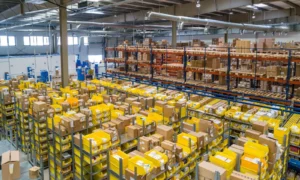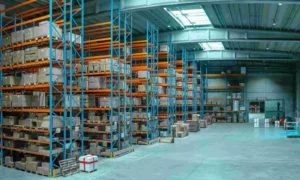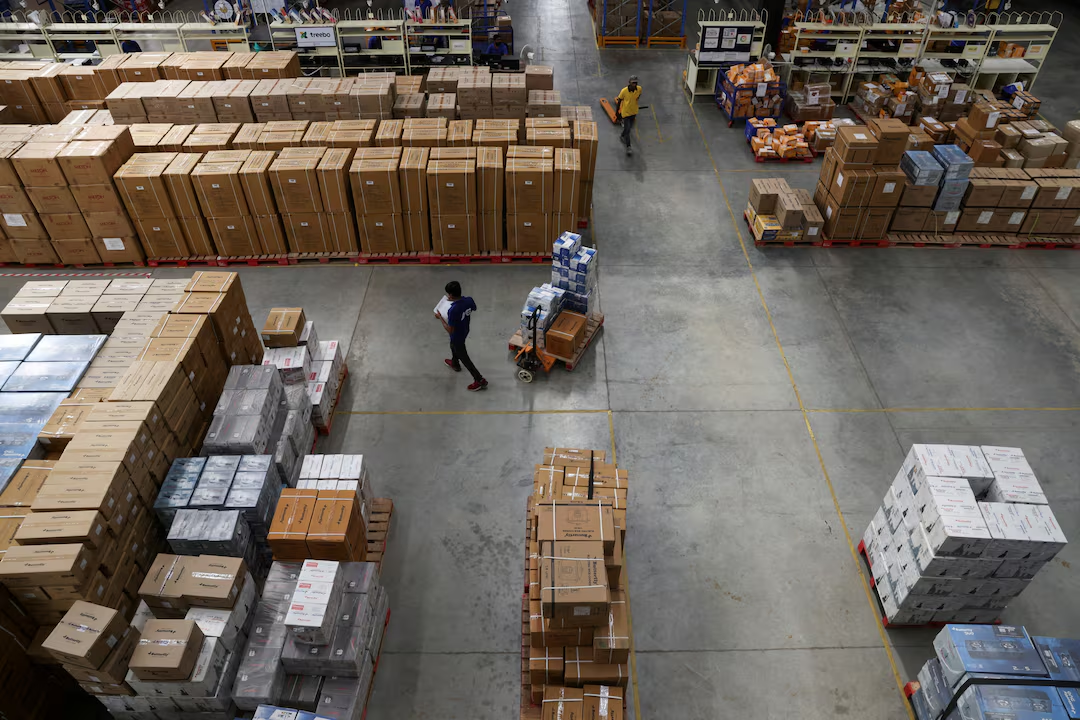Introduction
India is experiencing an unprecedented warehousing boom, driven by the country’s rapid economic growth and increasing storage demands from companies. However, this growth is being hampered by complex land acquisition processes. This article delves into the challenges faced by developers, the potential of India’s warehousing market, and the need for streamlined land acquisition to sustain this growth.
The Warehousing Boom: A Closer Look
Unprecedented Growth in Demand
India’s economic surge has created a massive demand for modern warehousing facilities. Companies across sectors are seeking more storage space to manage their inventory, driven by the e-commerce explosion and increased manufacturing activities. The final quarter of 2023 saw leased modern warehouse space reach a two-year peak, underscoring this trend.
- E-commerce Growth: The rise of online shopping platforms has dramatically increased the need for extensive warehousing solutions to manage the storage and distribution of goods.
- Manufacturing Hub: As India positions itself as a global manufacturing hub, the necessity for sophisticated storage facilities becomes evident, ensuring smooth operations and supply chain management.
The warehousing sector’s growth represents a significant opportunity for developers, both domestic and foreign, to capitalize on this booming market. However, the intricate land acquisition process remains a formidable barrier.

Challenges in Land Acquisition
Complexity and Delays
One of the most significant challenges developers face in India is the convoluted land acquisition process. Multiple ownerships, bureaucratic hurdles, and lengthy approval timelines make acquiring land a daunting task.
- Multiple Ownerships: In India, a single piece of land can have multiple owners, complicating the acquisition process. Negotiating with numerous stakeholders and ensuring clear title deeds adds to the delays.
- Bureaucratic Hurdles: Navigating through the myriad of regulations and obtaining necessary permits from various government bodies can be time-consuming and frustrating for developers.
- Extended Timelines: As highlighted by Robert Dobrzycki, CEO of Panattoni, it took eight months to complete acquisition formalities for their first complex near New Delhi. Such extended timelines can deter investment and slow down project execution.
These challenges not only increase the cost of projects but also affect the return on investment for developers, as surging land prices and falling rental yields further strain profitability.
Also Read: https://newsreporto.com/tragedy-at-hathras-116-die-at-godmans-ashram/
Panattoni’s Strategic Expansion
Navigating the Indian Market
Despite these hurdles, Panattoni, a U.S.- based industrial real estate developer, remains optimistic about the Indian market. Entering India in 2022, Panattoni plans to invest $100 million annually over the next 2-3 years, with hopes of signing multiple land transactions in 2024.
- Investment Plans: Panattoni’s commitment to investing in India underscores the market’s potential despite the challenges. The company’s strategic investment aims to tap into the growing demand for warehousing space.
- Future Projects: Starting construction on their first complex near New Delhi is a significant milestone. This project will serve as a blueprint for future developments, showcasing the feasibility of navigating India’s land acquisition process with persistence and strategic planning.
Panattoni’s west-to-east expansion strategy also includes plans to enter other Asian markets like Japan and Australia, reflecting a broader vision of growth beyond India.

The Need for Reforms
Streamlining Land Acquisition
To fully leverage the potential of India’s warehousing market, there is a urgent need to streamline the land acquisition process. Simplifying procedures and reducing bureaucratic red tape can significantly boost developer confidence and attract more investment.
Policy Reforms: Implementing policy reforms that simplify land transactions and provide clearer guidelines can expedite the acquisition process. A more transparent and efficient system will benefit both developers and landowners.
Government Initiatives: Government initiatives aimed at digitizing land records and making data more accessible can reduce disputes and ensure smoother transactions. Encouraging public-private partnerships can also facilitate faster development of infrastructure projects.
Such reforms will not only support the growth of the warehousing sector but also contribute to the overall economic development of the country.

Other Players in the Market
Competitive Landscape
Panattoni is not alone in recognizing the potential of India’s warehousing sector. Other major players are also making significant investments and expanding their presence in the market.
- Blackstone Joint Venture: Blackstone’s joint venture in India highlights the growing interest from global investors in the country’s warehousing sector. Their investments and projects are set to further fuel the market’s growth.
- Prologis Expansion: U.S.- based Prologis is another key player expanding its footprint in India. Their expertise and resources bring additional momentum to the warehousing boom, indicating strong future growth prospects.
The presence of these major players creates a competitive yet promising landscape for the warehousing sector in India.
Conclusion
India’s warehousing boom presents an exciting opportunity for developers and investors. However, the complex land acquisition process remains a significant hurdle that needs addressing. By streamlining procedures and implementing policy reforms, India can unlock the full potential of its warehousing sector, attracting more investment and supporting its rapid economic growth. The efforts of companies like Panattoni, along with other major players, demonstrate the market’s promise and the critical need for continued development and improvement in land acquisition processes.


2 thoughts on “Streamlining India’s Land Acquisition Amid Warehousing Boom”